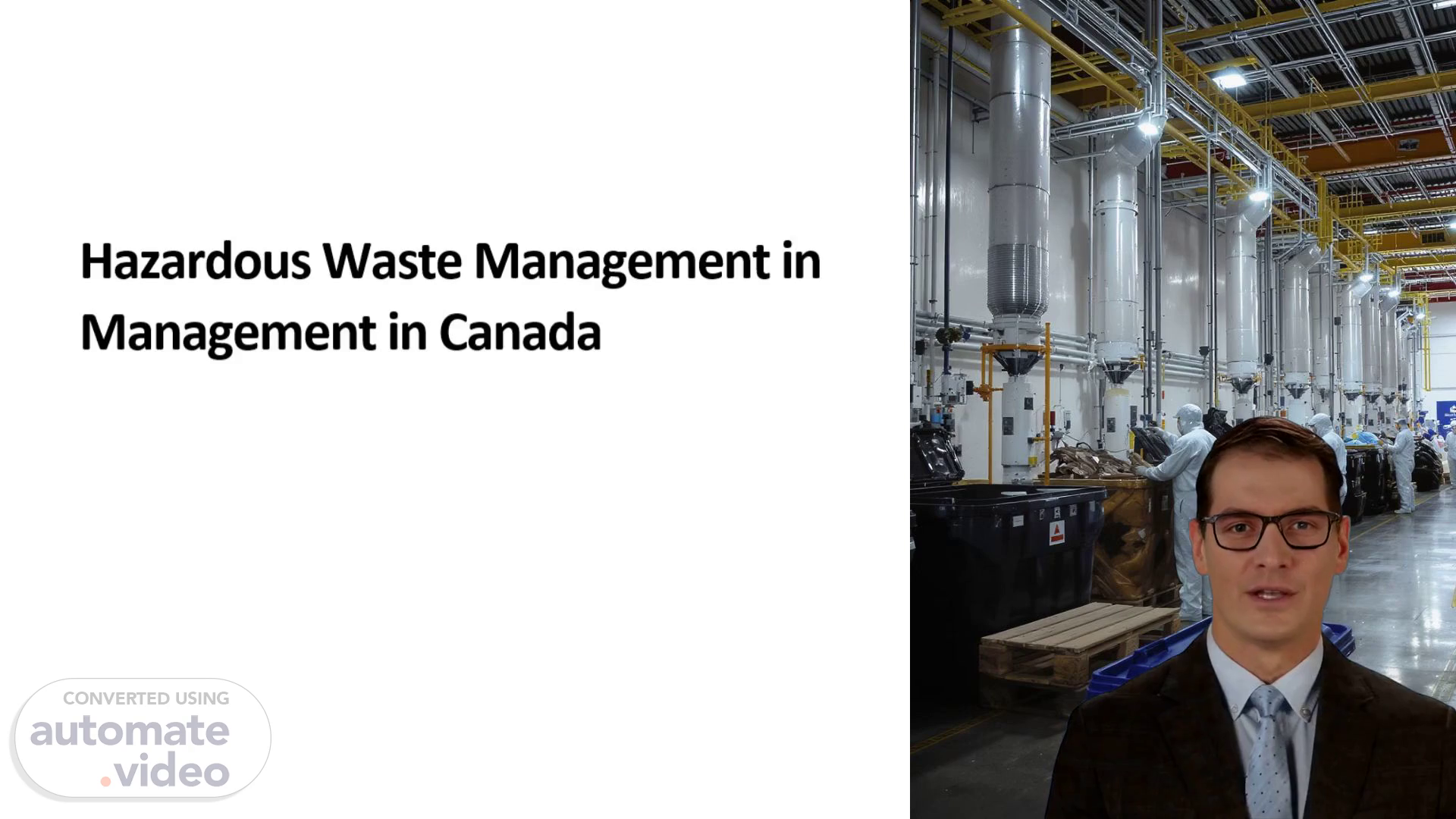Scene 1 (0s)
[Virtual Presenter] Managing hazardous materials requires careful attention to safety and regulatory compliance. In Canada, there are various frameworks in place to ensure the proper handling of these materials. These include the Canadian Environmental Protection Act, the Transportation of Dangerous Goods Act, and provincial regulations. Additionally, international agreements such as the Basel Convention play a crucial role in controlling cross-border waste transportation. As we move forward in this guide, we will delve into the specifics of hazardous waste types and their associated risks, as well as the key regulations governing their management. This will provide a solid foundation for understanding the complexities involved in hazardous waste management in Canada..
Scene 2 (47s)
[Audio] Hazardous waste refers to substances that can cause harm to human health or the environment. These substances include toxic chemicals that can be harmful even in small amounts, flammable materials that ignite and burn easily, corrosive agents that damage tissues or materials, and reactive substances that may explode or release dangerous gases..
Scene 3 (1m 12s)
[Audio] Hazardous waste can take many forms. Industries often produce solvents and oils, heavy metals, chemical by-products, and manufacturing residues. These substances pose significant risks if not disposed of properly. Household examples include batteries and electronics, paints and thinners, cleaning products, and pesticides and herbicides. Both industrial processes and everyday activities generate hazardous materials that require specialized disposal methods..
Scene 4 (1m 44s)
[Audio] Improper handling of hazardous waste has significant consequences for human health and the environment. It can lead to serious health issues such as cancer and respiratory problems. This also causes harm to wildlife by leading to bioaccumulation and species decline. Moreover, it contaminates air, water, and soil ecosystems, resulting in long-lasting damage to the environment..
Scene 5 (2m 9s)
[Audio] Poor management of hazardous waste can have severe consequences on our environment. One of these impacts is air pollution. When hazardous waste is not treated properly, it releases toxic gases into the atmosphere, compromising air quality. This can lead to serious health issues for both humans and wildlife. Another impact is water contamination. Leachate from improperly managed hazardous waste can seep into groundwater, affecting drinking water sources and harming aquatic ecosystems. Furthermore, soil degradation occurs when chemicals infiltrate the soil, reducing its fertility and spreading through food chains. Lastly, poor management of hazardous waste poses significant risks to public health, particularly for communities living near contaminated sites. These risks include increased disease rates and other health problems..
Scene 6 (3m 6s)
[Audio] The Canadian Environmental Protection Act, also known as CEPA, serves as the primary framework for environmental protection in Canada. This act sets the foundation for various regulations and guidelines related to the handling and disposal of hazardous waste. The Transportation of Dangerous Goods Act, commonly referred to as the TDG Act, specifically addresses the safe movement of hazardous materials between facilities. It ensures that they are transported in a manner that minimizes risks to people and the environment. Each province in Canada has its own set of regulations regarding the handling and reporting of hazardous waste. These provincial regulations may vary depending on the specific needs and concerns of each region. Individuals and organizations must comply with the necessary laws and guidelines when it comes to managing hazardous materials by understanding these key regulations..
Scene 7 (4m 4s)
[Audio] In Canada, several groups play key roles in ensuring the safe management of hazardous materials. The government creates environmental laws, enforces compliance with these standards, and provides guidance to the public. Waste generators have the responsibility to identify hazardous materials, follow established disposal procedures, and keep accurate records. Management companies are accountable for transporting materials properly and processing them safely. Additionally, advocacy groups monitor compliance and raise awareness about the importance of strict standards. By working together, these entities contribute to minimizing the risks associated with hazardous waste..
Scene 8 (4m 46s)
[Audio] Now that we have covered the key concepts, let's review what we have learned so far. Firstly, you should comprehend the basics of hazardous waste management, encompassing recognition of diverse types of hazardous waste and their associated hazards. Secondly, it is crucial to be aware of the regulations governing hazardous waste management in Canada, including the various frameworks established by the government at all levels. With this understanding, you are well-equipped to proceed with studying safe handling techniques and waste reduction methods..
